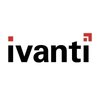
i
Xcelore
Filter interviews by
Xcelore Senior Software Engineer Interview Questions and Answers
8 Interview questions
Design a scalable real-time notification system using microservices, message queues, and cloud technologies.
Use microservices architecture to separate concerns (e.g., user management, notification service).
Implement a message broker like Apache Kafka or RabbitMQ for handling real-time notifications.
Utilize WebSockets for real-time communication between the server and clients.
Leverage cloud services (e.g., AWS, Azu...
A simple Todo List app built using React
Create a new React project using create-react-app
Create a Todo component to display the list of todos
Use state to manage the list of todos and input field for adding new todos
Implement functionality to add, delete, and mark todos as completed
Promises are a way to handle asynchronous operations in JavaScript, providing a cleaner alternative to callbacks.
Promises represent the eventual completion (or failure) of an asynchronous operation.
They allow you to chain multiple asynchronous operations together.
Promises have states: pending, fulfilled, or rejected.
You can handle the result of a promise using .then() and .catch() methods.
Example: const myPromise ...
REST API is a standard protocol for web services using HTTP, while GraphQL is a query language for APIs.
REST API follows a client-server architecture with stateless communication, while GraphQL allows clients to request only the data they need.
REST API typically uses multiple endpoints for different resources, while GraphQL uses a single endpoint for flexible data retrieval.
REST API has predefined data structures,...
Callback Hell is a situation in asynchronous programming where multiple nested callbacks make the code hard to read and maintain.
Occurs when multiple asynchronous operations are nested within each other
Leads to deeply nested code which is hard to read and maintain
Can be avoided by using Promises or async/await syntax
Async/Await is a feature in JavaScript that allows for asynchronous programming using promises.
Async/Await is syntactic sugar built on top of promises in JavaScript.
It allows for writing asynchronous code that looks synchronous, making it easier to read and maintain.
Async functions return a promise, which allows for chaining multiple asynchronous operations.
Await keyword is used inside async functions to wait for ...
Closures are functions that have access to variables from their containing scope even after the parent function has finished executing.
Closures allow functions to maintain access to variables from their outer scope
They are created when a function is defined within another function
Closures are commonly used in event handlers and callbacks
Hoisting is a JavaScript mechanism where variable and function declarations are moved to the top of their containing scope during compilation.
Variable and function declarations are hoisted to the top of their scope.
Only declarations are hoisted, not initializations.
Function declarations take precedence over variable declarations.
Hoisting can lead to unexpected behavior if not understood properly.
Xcelore Senior Software Engineer Interview Experiences
3 interviews found
I applied via LinkedIn and was interviewed in May 2024. There were 2 interview rounds.
(5 Questions)
- Q1. What is Hoisting?
- Ans.
Hoisting is a JavaScript mechanism where variable and function declarations are moved to the top of their containing scope during compilation.
Variable and function declarations are hoisted to the top of their scope.
Only declarations are hoisted, not initializations.
Function declarations take precedence over variable declarations.
Hoisting can lead to unexpected behavior if not understood properly.
- Q2. What is Closures?
- Ans.
Closures are functions that have access to variables from their containing scope even after the parent function has finished executing.
Closures allow functions to maintain access to variables from their outer scope
They are created when a function is defined within another function
Closures are commonly used in event handlers and callbacks
- Q3. What is Promises?
- Ans.
Promises are a way to handle asynchronous operations in JavaScript, providing a cleaner alternative to callbacks.
Promises represent the eventual completion (or failure) of an asynchronous operation.
They allow you to chain multiple asynchronous operations together.
Promises have states: pending, fulfilled, or rejected.
You can handle the result of a promise using .then() and .catch() methods.
Example: const myPromise = new...
- Q4. What is Callback Hell?
- Ans.
Callback Hell is a situation in asynchronous programming where multiple nested callbacks make the code hard to read and maintain.
Occurs when multiple asynchronous operations are nested within each other
Leads to deeply nested code which is hard to read and maintain
Can be avoided by using Promises or async/await syntax
- Q5. What is Async/Await ?
- Ans.
Async/Await is a feature in JavaScript that allows for asynchronous programming using promises.
Async/Await is syntactic sugar built on top of promises in JavaScript.
It allows for writing asynchronous code that looks synchronous, making it easier to read and maintain.
Async functions return a promise, which allows for chaining multiple asynchronous operations.
Await keyword is used inside async functions to wait for a pro...
(2 Questions)
- Q1. Code A Todo List in React ?
- Ans.
A simple Todo List app built using React
Create a new React project using create-react-app
Create a Todo component to display the list of todos
Use state to manage the list of todos and input field for adding new todos
Implement functionality to add, delete, and mark todos as completed
- Q2. Difference Between RestApi and Graphql ?
- Ans.
REST API is a standard protocol for web services using HTTP, while GraphQL is a query language for APIs.
REST API follows a client-server architecture with stateless communication, while GraphQL allows clients to request only the data they need.
REST API typically uses multiple endpoints for different resources, while GraphQL uses a single endpoint for flexible data retrieval.
REST API has predefined data structures, whil...
Skills evaluated in this interview
- Q1. Can you describe a challenging technical problem you encountered in a recent project and the approach you took to solve it?
- Ans.
I faced a performance bottleneck in a microservices architecture and optimized the data flow to enhance system efficiency.
Identified the bottleneck using profiling tools like New Relic and pinpointed slow database queries.
Refactored the data access layer to implement caching strategies, reducing database load by 40%.
Introduced asynchronous processing for non-critical tasks, improving overall response time by 30%.
Collab...
- Q2. How would you design a scalable architecture for a real-time notification system, and what technologies would you select for this implementation and why?
- Ans.
Design a scalable real-time notification system using microservices, message queues, and cloud technologies.
Use microservices architecture to separate concerns (e.g., user management, notification service).
Implement a message broker like Apache Kafka or RabbitMQ for handling real-time notifications.
Utilize WebSockets for real-time communication between the server and clients.
Leverage cloud services (e.g., AWS, Azure) f...
I applied via Referral and was interviewed in Aug 2023. There were 2 interview rounds.
Create The Given Design
(1 Question)
- Q1. Discussion of Approach to solve
Interview Preparation Tips
Top trending discussions






Interview questions from similar companies

I applied via Company Website and was interviewed before May 2023. There was 1 interview round.
I had to evaluate a software and let them understand where this software could be implemented and the pros and cons of the software.
Interview Preparation Tips

Senior Software Engineer Interview Questions & Answers
Wednesday Solutionsposted on 18 Jun 2025
I appeared for an interview in Dec 2024, where I was asked the following questions.
- Q1. Describe your most Complex coding Challenge .
- Q2. How do you handle technical debt ?
- Ans.
I prioritize addressing technical debt through regular assessments, refactoring, and integrating it into the development process.
Conduct regular code reviews to identify areas of technical debt, such as outdated libraries or inefficient algorithms.
Implement a 'debt backlog' where technical debt items are tracked and prioritized alongside new features.
Allocate specific time in sprints for refactoring and addressing tech...

I appeared for an interview in Nov 2024, where I was asked the following questions.
- Q1. What is Go Module?
- Ans.
Go Modules are a dependency management system for Go programming language, enabling versioning and isolation of packages.
Introduced in Go 1.11 to manage dependencies more effectively.
Allows developers to define module dependencies in a 'go.mod' file.
Supports semantic versioning, making it easier to manage package versions.
Modules can be versioned, allowing for reproducible builds.
Example: 'module example.com/my/module'...
- Q2. What is difference between Goroutine and Thread.
- Ans.
Goroutines are lightweight, managed by Go runtime, while threads are OS-level, heavier, and managed by the OS.
Goroutines are cheaper in terms of memory and resources compared to threads.
Goroutines are multiplexed onto a smaller number of OS threads, allowing for efficient concurrency.
Creating a goroutine is as simple as using the 'go' keyword, e.g., 'go myFunction()'.
Threads require more overhead for creation and manag...

Software Engineer Interview Questions & Answers
Smarter BIZ Technologiesposted on 9 May 2021
Interview Questionnaire
1 Question
- Q1. All the questions related to your technical work experience throughout the carrier

I applied via Campus Placement and was interviewed before Sep 2021. There were 2 interview rounds.

Mcqs on javascript,. 1 coding question
Interview Preparation Tips
1 online coding
2 technical rounds DSA
1 tech managerial
1 hr
Os, DBMS, DSA, stacks, trees,

Software Engineer Interview Questions & Answers
Smarter BIZ Technologiesposted on 2 Jul 2021
I applied via Recruitment Consultant and was interviewed in Jan 2021. There was 1 interview round.
Interview Questionnaire
1 Question
- Q1. I have no one question?Only I have an doubt I'm selected or no selected...

Software Engineer Interview Questions & Answers
Thinkitive Technologiesposted on 4 May 2019
I applied via Naukri.com and was interviewed in Oct 2018. There were 3 interview rounds.
Interview Questionnaire
3 Questions
- Q1. Asked me to draw spring mvc architecture and about collection framework.
- Q2. Asked me to write the logic for pattern.
- Ans.
This question involves creating a specific pattern using loops and conditional statements in programming.
Identify the desired pattern (e.g., asterisks, numbers).
Use nested loops: outer loop for rows, inner loop for columns.
Control the output format with conditional statements.
Example: For a pyramid pattern, increase spaces and asterisks in each row.
- Q3. Asked me on core java.
Interview Preparation Tips
Skills: Communication
Duration: <1 week
Xcelore Interview FAQs
Tell us how to improve this page.
Xcelore Interviews By Designations
- Xcelore Senior Software Engineer Interview Questions
- Xcelore Software Engineer Interview Questions
- Xcelore Java Developer Interview Questions
- Xcelore Software Engineer Trainee Interview Questions
- Xcelore Design Trainee Interview Questions
- Xcelore Digital Marketing Intern Interview Questions
- Xcelore Software Developer Interview Questions
- Xcelore Full Stack Developer Interview Questions
- Show more
Interview Questions for Popular Designations
- Software Developer Interview Questions
- Software Engineer Interview Questions
- Senior Engineer Interview Questions
- System Engineer Interview Questions
- Associate Software Engineer Interview Questions
- Project Engineer Interview Questions
- Senior Software Developer Interview Questions
- Lead Engineer Interview Questions
- Show more
Overall Interview Experience Rating
based on 3 interview experiences
Difficulty level
Duration
Senior Software Engineer Interview Questions from Similar Companies
Xcelore Senior Software Engineer Reviews and Ratings
based on 4 reviews
Rating in categories
|
Senior Software Engineer
11
salaries
| ₹9 L/yr - ₹16.6 L/yr |
|
Software Engineer
5
salaries
| ₹4 L/yr - ₹7 L/yr |
|
Product Manager
4
salaries
| ₹5 L/yr - ₹14 L/yr |
|
ml engineer
4
salaries
| ₹4.2 L/yr - ₹7.4 L/yr |
|
Devops Engineer
3
salaries
| ₹6 L/yr - ₹13 L/yr |

Zidio Development

NexTurn

Springbord Systems

Kanerika Software
- Home >
- Interviews >
- Xcelore Interview Questions










